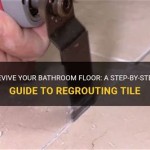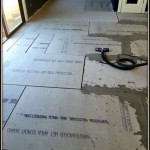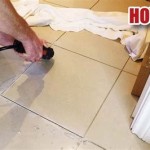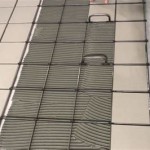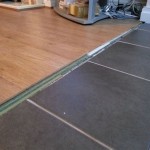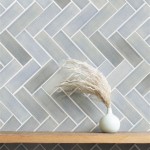The Ultimate Guide To Removing Silicone From Tiles And Grout In Shower
Silicone sealant is commonly used in showers to create a waterproof barrier between tiles and fixtures. It's essential for preventing water damage and mold growth. However, with time and exposure to moisture, silicone can degrade, discolor, or develop mold and mildew, necessitating its removal and replacement. Removing old silicone can be a challenging task, requiring patience and the right tools and techniques. This guide offers comprehensive instructions and insights into effectively removing silicone from tiles and grout in a shower.
Identifying the Need for Silicone Removal
Before embarking on the removal process, it's crucial to accurately assess the condition of the existing silicone. Discoloration, such as yellowing or browning, often indicates age and degradation. The presence of mold and mildew signifies that the silicone's protective barrier has been compromised, allowing moisture to penetrate. Cracking, peeling, or shrinking of the silicone indicate a loss of elasticity and adhesion. If the silicone is no longer forming a tight seal, water can seep behind the tiles, potentially leading to structural damage. Periodic inspection of the silicone in your shower area is vital to proactively prevent extensive problems.
Furthermore, aesthetic considerations can also motivate silicone removal. If you're renovating your bathroom or simply want to refresh the look of your shower, removing the old silicone and replacing it with a fresh application can significantly improve the overall appearance. Consider the age of the sealant as well. Even if it appears to be in relatively good condition, silicone typically has a lifespan of around five years. After this period, its effectiveness diminishes, and it's prudent to replace it to maintain optimal protection.
Attempting to apply new silicone over old, damaged silicone is generally not recommended. The new silicone may not properly adhere to the old sealant, resulting in a weak bond and potential leaks. Thorough removal of the old silicone is a necessary prerequisite for a successful and long-lasting resealing job.
Gathering the Necessary Tools and Materials
Successful silicone removal hinges on having the appropriate tools and materials readily available. A sharp utility knife or a specialized silicone removal tool is essential for cutting through the sealant. A plastic scraper or putty knife is useful for lifting and removing the silicone without damaging the underlying tiles or grout. Avoid using metal scrapers, as they can easily scratch or chip the tiles.
Chemical silicone remover is a valuable addition to your toolkit. These solvents are designed to soften the silicone, making it easier to remove. Ensure the remover is specifically formulated for silicone and is safe for use on tile and grout. Wear appropriate personal protective equipment (PPE), including gloves and eye protection, to safeguard against potential skin and eye irritation from the chemical remover.
Clean-up supplies are also crucial. A vacuum cleaner with a brush attachment will help remove loose debris and silicone fragments. Clean cloths or paper towels are needed for wiping surfaces clean. Isopropyl alcohol or mineral spirits can be used to remove any residual silicone residue. Finally, have a small container of warm water and a sponge on hand for rinsing and cleaning surfaces after the removal process.
Securing proper ventilation is also critical. Many chemical removers emit fumes that can be irritating or harmful. Open windows and doors to ensure adequate airflow during the removal process. If ventilation is limited, consider using a respirator mask to protect your respiratory system.
Step-by-Step Guide to Silicone Removal
The process of removing silicone from tiles and grout involves a series of methodical steps. Careful execution of these steps is critical to minimizing damage and ensuring a clean surface for resealing.
Step 1: Softening the Silicone. Begin by applying a silicone remover to the old sealant. Follow the manufacturer's instructions for application and dwell time. Typically, the remover is applied liberally to the silicone and allowed to sit for several hours, or even overnight, to fully penetrate and soften the sealant. The dwell time is critical, as it allows the chemical remover to break down the silicone's polymer chains, making it more pliable and easier to remove. Cover the area with plastic wrap to prevent the remover from drying up too quickly.
Step 2: Cutting the Silicone. Using a sharp utility knife or a specialized silicone removal tool, carefully cut along both edges of the silicone bead. This separates the silicone from the tile and grout surfaces. Hold the knife at a shallow angle to avoid scratching the tiles. Apply steady, even pressure to ensure a clean cut. If the silicone is particularly thick or stubborn, you may need to make multiple passes with the knife. Avoid cutting directly into the grout lines, as this can damage the grout.
Step 3: Removing the Silicone. Once the silicone has been cut, use a plastic scraper or putty knife to gently lift and peel away the sealant. Start at one end and work your way along the entire bead. Apply steady pressure and try to remove the silicone in as few pieces as possible. If the silicone is still clinging tightly, reapply the silicone remover and allow it to dwell for a longer period. Avoid using excessive force, as this can damage the underlying surfaces. If necessary, use pliers to grip and pull stubborn pieces of silicone.
Step 4: Cleaning the Surfaces. After removing the bulk of the silicone, there will likely be residual residue remaining on the tiles and grout. Use isopropyl alcohol or mineral spirits to clean these surfaces. Apply the solvent to a clean cloth and wipe the affected areas thoroughly. For stubborn residue, you may need to scrub gently with a non-abrasive scouring pad. Pay particular attention to the grout lines, as silicone tends to adhere more strongly to porous surfaces. Repeat the cleaning process as needed until all traces of silicone residue are removed.
Step 5: Preparing for Resealing. Before applying new silicone, ensure that the surfaces are completely clean and dry. Use a vacuum cleaner with a brush attachment to remove any remaining debris. Wipe the surfaces with a clean, dry cloth to remove any lingering moisture. Allow the area to air dry for several hours, or use a hairdryer on a low setting to expedite the drying process. Applying silicone to a wet surface will compromise its adhesion and lead to premature failure.
Alternative Methods for Silicone Removal
While chemical silicone removers are often the most effective solution, several alternative methods can be employed, particularly when dealing with small amounts of silicone or when chemical removers are not readily available. These methods may require more manual effort but can be effective in certain situations.
Heat Gun or Hair Dryer: Applying heat to the silicone can soften it, making it easier to remove. Use a heat gun on a low setting or a hair dryer to warm the silicone for several minutes. Be careful not to overheat the area, as this can damage the tiles or grout. After heating the silicone, use a plastic scraper or putty knife to peel it away. This method is particularly effective for removing thin layers of silicone residue.
Razor Blade Scraper: A razor blade scraper can be used to carefully scrape away the silicone. Hold the scraper at a shallow angle and apply steady, even pressure. Be extremely cautious when using a razor blade, as it can easily scratch or damage the tiles. This method is best suited for removing small amounts of silicone residue from smooth surfaces.
Vinegar or Baking Soda Paste: For less stubborn silicone, vinegar or a baking soda paste can be used. Apply vinegar to the silicone and let it sit for several hours. Alternatively, make a paste of baking soda and water and apply it to the silicone. After the dwell time, use a plastic scraper or putty knife to remove the softened silicone. These methods are less effective than chemical removers but can be useful for removing small amounts of residue.
Preventing Silicone Degradation and Extending its Lifespan
Once you've successfully removed the old silicone and applied a fresh bead, taking proactive steps to prevent future degradation can significantly extend its lifespan and minimize the need for frequent replacements. Proper ventilation of the shower area is paramount. After each shower, open windows or use a ventilation fan to remove excess moisture. High humidity levels promote mold and mildew growth, which can accelerate the degradation of the silicone.
Regular cleaning of the shower area, including the silicone sealant, is also crucial. Use a mild detergent and a soft brush or sponge to remove soap scum, grime, and other deposits. Avoid using harsh chemicals or abrasive cleaners, as these can damage the silicone. A simple solution of vinegar and water can be effective for removing mold and mildew. Spray the solution onto the affected areas and let it sit for several minutes before scrubbing gently.
Choosing a high-quality silicone sealant formulated for bathroom use is essential. Look for products that are specifically designed to resist mold and mildew growth. Consider using a sealant that contains antimicrobial additives. When applying the new silicone, ensure that the surfaces are completely clean and dry. Follow the manufacturer's instructions carefully for application and curing time. A properly applied and well-maintained silicone sealant can provide years of reliable protection against water damage and mold growth.

How To Remove Silicone From Shower Bathroom Tiles Inspire Diy Kent Thomas
How To Remove Silicone Sealant From Tile Glass Metal And Wood

How To Remove Silicone From Shower Bathroom Tiles Inspire Diy Kent Thomas

How To Clean Black Moldy Shower Or Kitchen Tile And Silicone Caulking Two Methods No Scrubbing

How To Remove Silicone Sealant

Get Professional Service With Resealing Your Shower In London
Grout Vs Silicone What S Best When Renovating Your Bathroom

The Ultimate Guide To Cleaning Grout Floors Tile Showers Natural Stone
How To Remove Silicone From A Shower Diy 2024 Guide

Tile Caulk Cleaning And Whitening Doityourself Com
Related Posts


